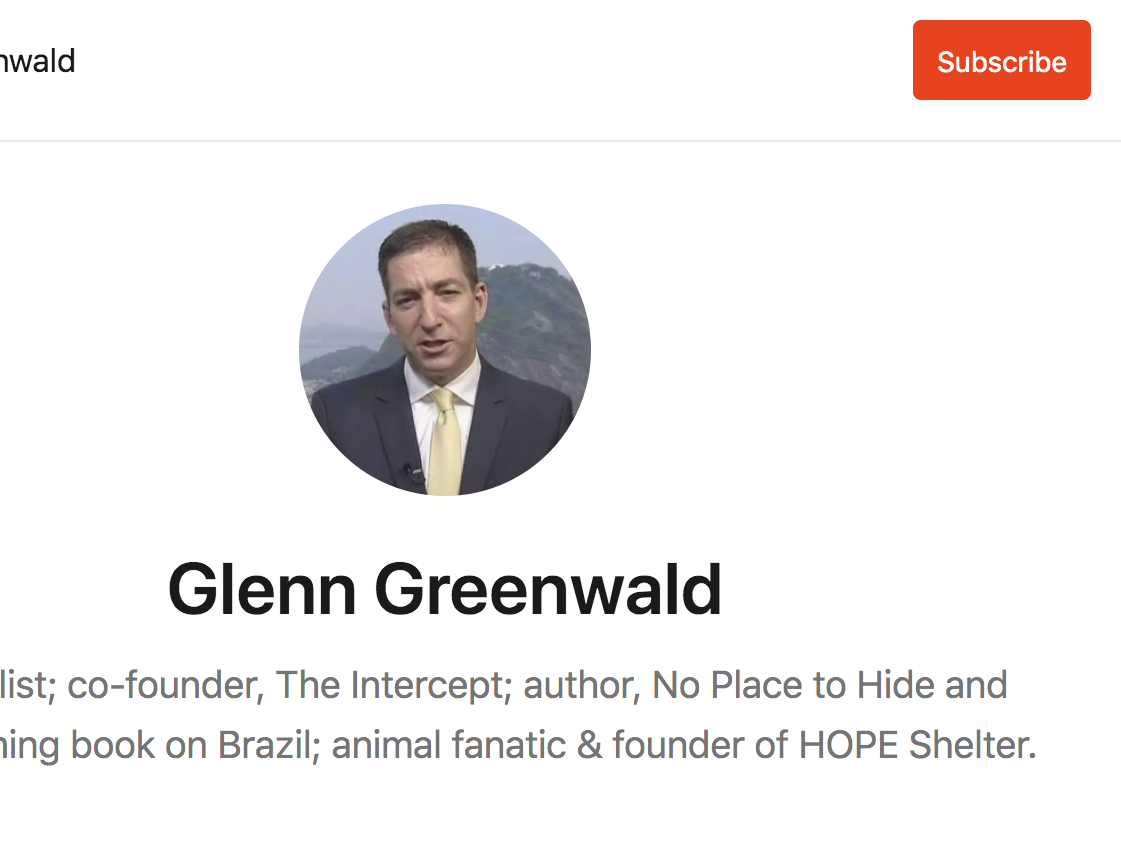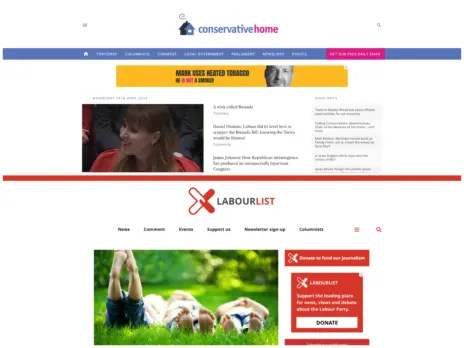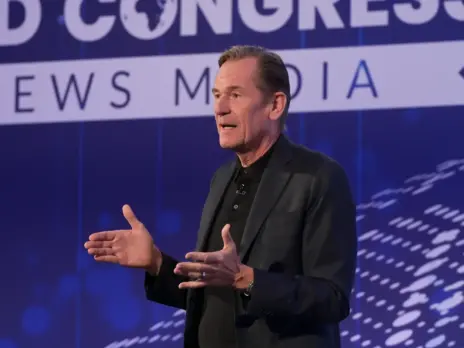
Imagine a media world where thousands of journalists make a living by writing about niche subject areas and sending out regular newsletters to paying subscribers.
This is the future imagined by the creators of Substack, a newsletter platform that launched in San Francisco in 2017.
Three years ago, Substack started with one newsletter, Sinocism, in which Bill Bishop – a co-founder of MarketWatch – reports on China for his subscribers.
Today it hosts thousands of newsletter writers. In recent months, several high-profile journalists have quit their jobs at established publications to launch themselves on Substack.
The new joiners include Glenn Greenwald, who quit the Intercept claiming it had censored his reporting on Joe Biden in October, former Digiday editor-in-chief Brian Morrissey, and ex-New York magazine columnist Andrew Sullivan.
Substack claims that its various writers’ pages attract millions of readers every week. It also says the newsletters it hosts have more than 250,000 paid subscriptions between them.
Substack’s most impressive boast is that its top ten paid-for newsletters are bringing in more than $7m a year collectively.
As part of our ongoing Platform Profile series, Press Gazette spoke to Hamish McKenzie, a former journalist and one of Substack’s co-founders.
Why Substack was launched
McKenzie says Substack’s founders shared a belief that the media ecosystem “had become all messed up because online advertising had given rise to these big addiction machines essentially – Facebook and Twitter and Google – that were creating perverse incentives for writers and creators”.
Led by chief executive Chris Best, they decided that the online advertising system was “the root of it all and that’s the problem… you have to unwed media from that model, and that subscriptions would be better – direct payments between readers and writers. And subscriptions that specifically recur and can supply sustainable revenue.”
They took early inspiration from Stratechery, a blog/ newsletter run by Ben Thompson that offers its readers a mixture of free and paid-for analysis of technology business models.
“We just asked ourselves: why aren’t more people trying it?” says McKenzie.
They decided one of the reasons was that many journalists would struggle with the technological and administrative side of running an operation like Stratechery.
Their solution was to offer these services to journalists in exchange for a slice of their future income (Substack takes a 10% cut of revenue from paid-for pages).
“Most writers aren’t good business people or aren’t naturally business-inclined, and aren’t tech-savvy,” says McKenzie. “And even if they are tech-savvy, that’s a lot of work to put that all together and maintain it. And so so much of your time goes towards managing your stack and answering customer support emails.
“So we thought: what if we took all that other stuff off the table? So all you had to be was a good writer. What could happen? What new possibilities might emerge? And essentially we put the constituents of Stratechery into a box and just made it simple for a writer to start a publication like that.”
Q&A: How does it work? Why work with Substack? Which writers do well?
Q: How does Substack work for writers? Do they usually launch on the platform, build a free audience and then decide whether to start charging?
A: “That’s a common model. Some people are ready to go from day one – they have the audience already to be able to turn on payments and succeed.
“And some people have a model where it’s more ‘news you can use’, intelligence-based information that they can justify [charging for] and keeping most things behind a paywall.
“But other people will take time to establish themselves and build a mailing list and invest in their business by giving themselves a couple of months to settle into their own rhythm and expose more people to the product. You can basically flip a switch when you decide to go paid.”
Q: What are the main advantages of working with Substack as opposed to doing it yourself like Stratechery? Is being on Substack, with its millions of existing readers, useful for exposure?
A: “So far, not really. We haven’t focused on that as an area of investment. But there are other subtle network advantages to being part of Substack.
“The main thing is it’s very simple to get started, and we take care of all the complicated, niggly bullshit so you can just focus on the important thing, which is the work itself. So we say we take care of everything except the hard part.
“And then there are other effects. People know what the Substack model is. Readers are familiar with the Substack model now, so they understand that there’s a free component and a paid component, and they don’t have to go through cognitive hoops before they decide to sign up or not.
“And if you’re already subscribed to one Substack with your credit card then your information’s already in the system, so it’s one click to subscribe to the next publication. Which is good for readers in terms of reducing friction.”
Q: Are most of Substack’s writers in the US currently?
A: “It’s very international, but the US is definitely over-represented, especially of the ones who are making a bunch of money.”
Q: Why is that?
A: “It’s our home base. It’s where we started building the network. We’ve grown a lot through word of mouth. So we might get a few writers who are strong in pockets of subject areas or geographies on Substack, and so their friends, readers and observers start coming to Substack too. It’s US-biased mostly by us starting here.”
Q: How do you see Substack growing over the next five to ten years? How will reader habits change?
A: “I think there’ll be more writers finding more readers, and more niches being covered well based on the subscription model within Substack, and that the network will continue to grow through that momentum.
“Substack is still nascent – lots of people don’t know about it, have not experienced how great it is to be a reader of one of these publications that are written by someone who you trust and love.
“So even if Substack did not evolve as a tool or network, there would just be general growth as more of these quality publications arise, and more writers realise how much money they can make doing this work.
“But I think you will also see Substack evolve as more of a network – where the network benefits to Substack will become more obvious.
“At the moment, each Substack is a little bit like its own island. And that’s by design. Even as Substack becomes a network, always the relationship that the writer has with their audience is sacrosanct – it’s not mediated by Substack, it’s facilitated by Substack. The writer owns all their content, all their mailing lists, all their payments relationships – and they can take all of that stuff whenever they want.
“But over time we expect to see these islands have more communication and co-operation between them. So I think you’ll see discovery features start to be a part of that network advantage.
“One very small example is we just [launched] a feature that lets you connect your Twitter account to find people who you follow on Twitter who have Substacks. It is a very modest thing, but it’s one example of how these islands might start to have more co-operation.”
Q: How important is it for writers to have a large social media following before launching on Substack?
A: “It’s definitely a huge advantage if you have a large social media following. If you have an established crowd who love your work then you can be off to a fast start.
“But there’s no requirement to have any audience at all to start investing in your media business. Just like in the days of blogging, lots of people started with zero readers and grew them over time or became overnight successes because something helped them have their break-out moment.
“The same dynamics play out on Substack and are accelerated a bit because of the maturity of the social media ecosystem. So you do one story, or one tweet, that finds a massive audience then you might suddenly find yourself with thousands of people on your mailing list or Substack the next day.”
Q: What kind of writers do well on Substack? What skills do they need to succeed?
A: “The key differentiators are commitment and consistency and investing your energy into making a publication good.
“You’re building a publication, and you’re building a media business – it’s not easy. So you’ve got to commit to it.
“And then owning a particular area. It might be the economics of model trains, or the politics of food deserts. Something that you uniquely write well about or have deep expertise about, and then your voice is differentiated too.
“If you’ve got a strong voice, a deep knowledge or passion about a particular area, and you’re willing to put in the time, then you can succeed.
“I won’t say you will succeed, because nothing’s guaranteed – there’s still similar dynamics between who wins and who loses in terms of being able to build an audience. But you certainly can succeed. And it’s simpler than ever.”
Q: How closely does Substack work with writers on its platform?
A: “The way we started the ecosystem, it started with me knowing Bill [Bishop] personally, and so there has always been some human-to-human contact with writers and some people in the team at Substack. Partly to see the ecosystem you just need to [understand] the success stories that others can learn from and that Substack can learn from… There has to be an understanding of what’s possible with Substack and what are the right playbooks and what works really well. And it’s still so early in the journey of Substack existing that we feel like there’s a lot of work to be done on the education side. And so that does mean working with writers one-on-one where we can, and then trying to scale that through efforts around content and community and resources.”
Q: Several high-profile journalists have recently quit their jobs at established publications to launch on Substack. Do you often approach journalists, as you did with Bill Bishop, asking them to come to Substack?
A: “We’re experimenting with that. We’ve developed a pilot programme where we’re seeing if it makes sense in a business way for Substack to help writers who we think have high potential with this model get started on Substack, create their own businesses on Substack.
“And so in some cases, a very small handful of cases, we’ve provided the equivalent of seed funding that just helps these people get started.
“We think that being a platform for these businesses is more than just providing software. We’re also working at building out, in a similar pilot at the moment, a range of services that can help people do their job really well.
“For example, access to editing support, access to healthcare – which in the US is a big deal – and design support, Getty Images. [Substack also offers legal support to paid-for Substack journalists in the US.]
“It’s too early days for us to be up on the hilltop beating our chest about it. But we’re encouraged by the early results and are hopeful that we can scale that out to many more writers in the future.”
Email pged@pressgazette.co.uk to point out mistakes, provide story tips or send in a letter for publication on our "Letters Page" blog






